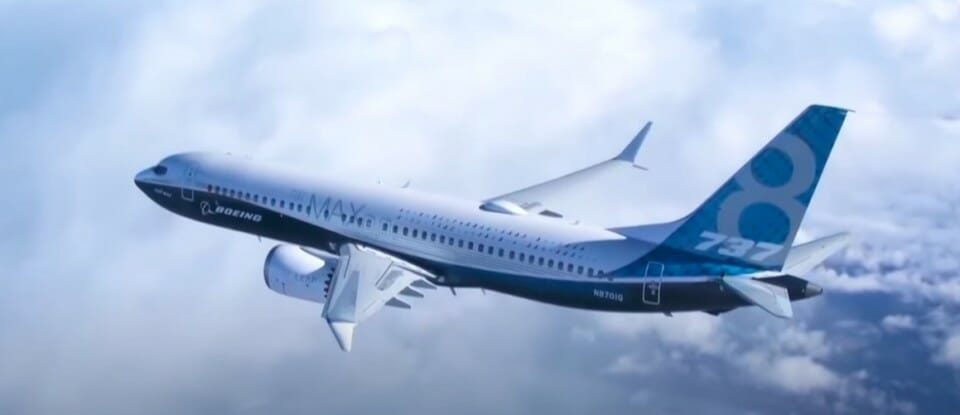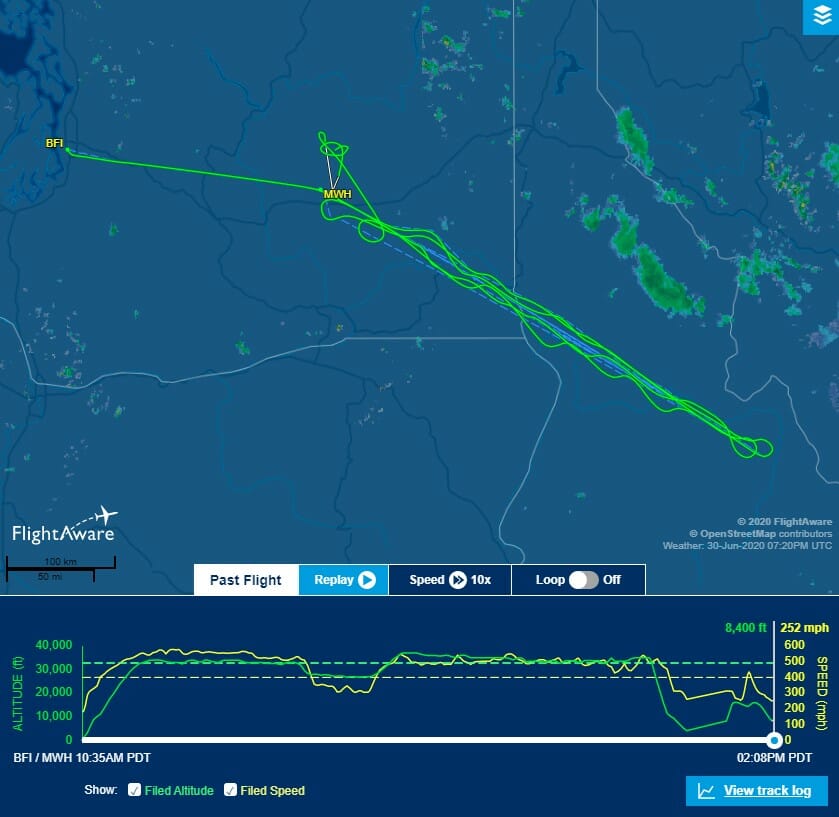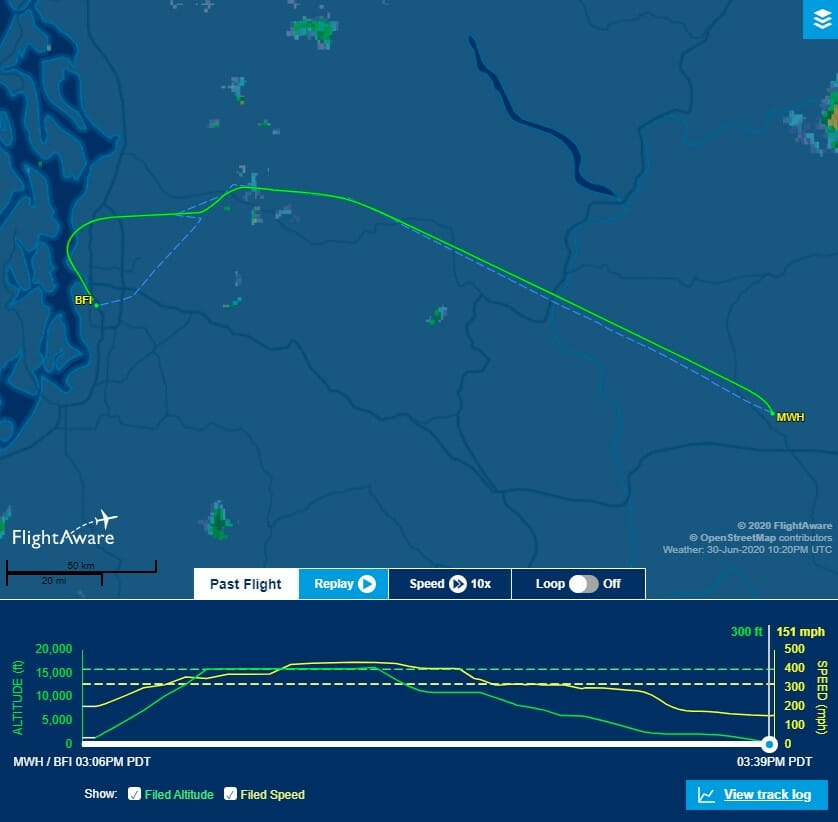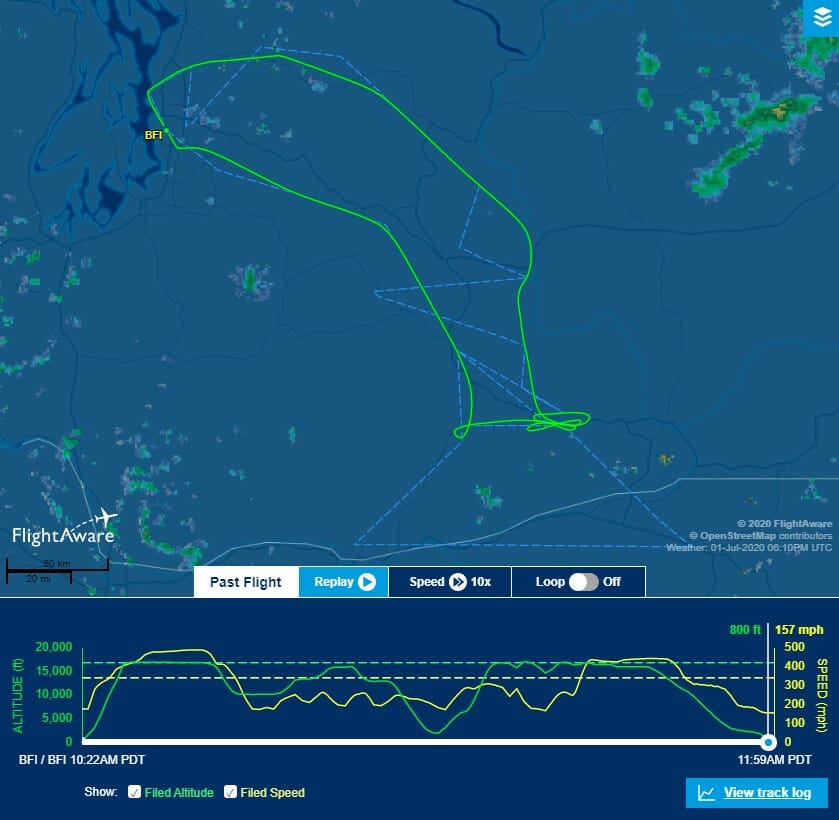Yesterday, Boeing and the FAA completed flight testing of the 737 MAX after three days of flights. This post will cover day 2 and day 3 of the testing and flight profiles. I covered day 1 previously, you can read that post here.

Flight Testing – Day 2
The 737 MAX aircraft took off from Boeing Field (BFI) past Moses Lake for high altitude testing over Idaho. This first flight of the day lasted for almost four hours before landing at Moses Lake (MWH). Day two concluded with a ferry flight back to Boeing Field. Here are the flight profiles for day two from flightaware.com:
- Airspeed: 403 mph
- Altitude: 33,000 feet
- Distance 1,580 miles
- Flight duration: 3:33

The flight profile for flight 2, a ferry flight back to Boeing Field:
- Airspeed: 322 mph
- Altitude: 16,000 feet
- Distance 175 miles
- Flight duration: 0:33

Flight Testing – Day 3
Yesterday, the test aircraft departed Boeing Field at 10:22 flying south towards Mount Ranier. This flight tested tight turns at high altitude along with low-level maneuvers. Here is the flight profile for the final test flight:
- Airspeed: 345 mph
- Altitude: 17,000 feet
- Distance 486 miles
- Flight duration: 1:37

What’s Next After Flight Testing
The next step is for the FAA to compile and review the test data and interview the test pilots for their review of any handling issues. Assuming this phase passes, Boeing can move on to the remaining phases needed to achieve the airworthiness certification from the FAA.
Passing the flight testing is just the beginning for Boeing. Boeing engineers will then need to develop service bulletins addressing software upgrades to the flight management system and rewiring requirements. After the service bulletins are approved, the airlines that already have the 737 MAX will need to have their aircraft updated and certified that the updates have been successfully completed before they can begin revenue flights.
Training for transitioning pilots will have to be approved. The 737 MAX pilots will have to obtain type-rating for the 737 MAX before they can fly the aircraft. This training will most likely require training in a 737 MAX simulator. This is an issue because at the beginning of 2020, there were only 34 installed 737 MAX simulators. Full motion simulators for the 737 MAX can cost around $15 million to purchase and have expenses of $400 – $500 per hour of operation.
Additionally, the European Union Aviation Safety Agency (EASA) will require synthetic airspeed calculation to receive their approval. It looks like the 737 MAX will be allowed to fly in Europe pending the installation of synthetic airspeed calculation.
When Will The 737 MAX Return To Service?
This all depends on how soon Boeing can pass the FAA flight tests and complete the remaining tasks to certify the aircraft as airworthy. Don’t expect the 737 MAX to be in airline revenue service before 2021. Additionally, pilots will have to take 737 MAX simulator training and achieve the 737 MAX type rating. One of the problems with pilot training is that there are only about 30 737 MAX simulators installed at this time. The lack of simulators will increase the time it takes for pilots to obtain the new type rating.
Final Thoughts
This is certainly some good news for Boeing. This disaster has cost both Boeing and the airlines a lot of money. Now is the time for Boeing to rebuild both credibility and trust to the airlines and the flying public. One obstacle that is outside of Boeing’s control is if and when passengers will be willing to fly on the 737 MAX. The bottom line is that when the 737 MAX is re-certified as airworthy, it will have been the most scrutinized aircraft testing in commercial aviation history.
